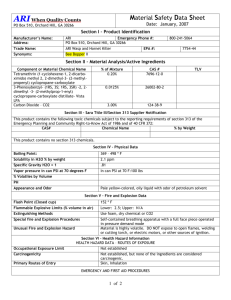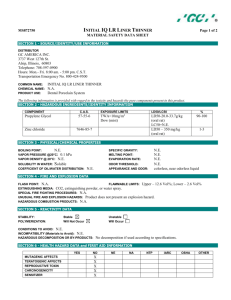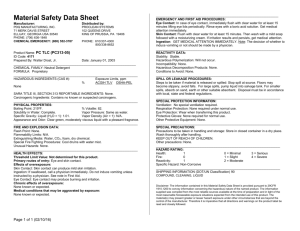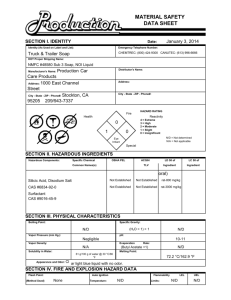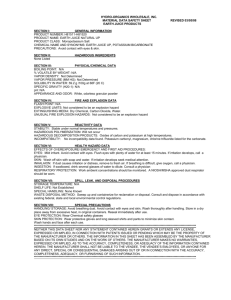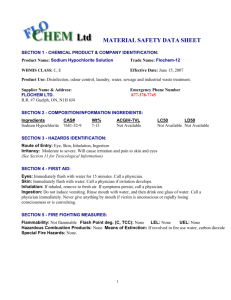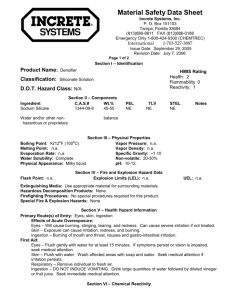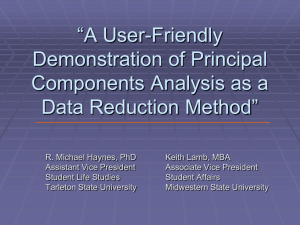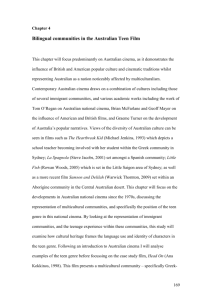ARI When Quality Counts
advertisement
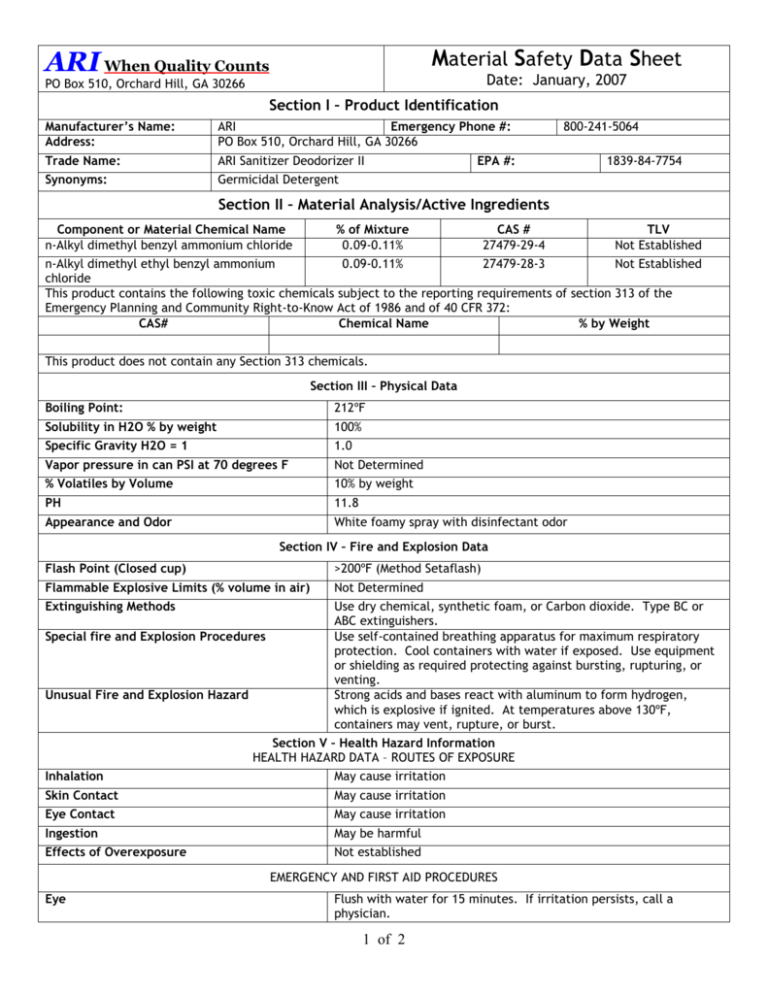
Material Safety Data Sheet ARI When Quality Counts Date: January, 2007 PO Box 510, Orchard Hill, GA 30266 Section I – Product Identification Manufacturer’s Name: Address: ARI Emergency Phone #: PO Box 510, Orchard Hill, GA 30266 Trade Name: ARI Sanitizer Deodorizer II Synonyms: Germicidal Detergent 800-241-5064 EPA #: 1839-84-7754 Section II – Material Analysis/Active Ingredients Component or Material Chemical Name n-Alkyl dimethyl benzyl ammonium chloride % of Mixture 0.09-0.11% CAS # 27479-29-4 TLV Not Established n-Alkyl dimethyl ethyl benzyl ammonium 0.09-0.11% 27479-28-3 Not Established chloride This product contains the following toxic chemicals subject to the reporting requirements of section 313 of the Emergency Planning and Community Right-to-Know Act of 1986 and of 40 CFR 372: CAS# Chemical Name % by Weight This product does not contain any Section 313 chemicals. Section III – Physical Data Boiling Point: 212ºF Solubility in H2O % by weight 100% Specific Gravity H2O = 1 1.0 Vapor pressure in can PSI at 70 degrees F Not Determined % Volatiles by Volume 10% by weight PH 11.8 Appearance and Odor White foamy spray with disinfectant odor Section IV – Fire and Explosion Data Flash Point (Closed cup) >200ºF (Method Setaflash) Flammable Explosive Limits (% volume in air) Not Determined Extinguishing Methods Use dry chemical, synthetic foam, or Carbon dioxide. Type BC or ABC extinguishers. Special fire and Explosion Procedures Use self-contained breathing apparatus for maximum respiratory protection. Cool containers with water if exposed. Use equipment or shielding as required protecting against bursting, rupturing, or venting. Unusual Fire and Explosion Hazard Strong acids and bases react with aluminum to form hydrogen, which is explosive if ignited. At temperatures above 130ºF, containers may vent, rupture, or burst. Section V – Health Hazard Information HEALTH HAZARD DATA – ROUTES OF EXPOSURE Inhalation May cause irritation Skin Contact May cause irritation Eye Contact May cause irritation Ingestion May be harmful Effects of Overexposure Not established EMERGENCY AND FIRST AID PROCEDURES Eye Flush with water for 15 minutes. If irritation persists, call a physician. 1 of 2 Skin Ingestion Wash areas with soap and water. If irritation persists, call a physician. Drink water or milk. Avoid alcohol. Call a physician immediately. Inhalation Remove to fresh air Notes to physician: None. Section VI – Reactivity Data Condition contributing to instability Stable Incompatibility None Hazardous decomposition products None Conditions contributing to hazardous polymerization None Neutralizing chemical Waste disposal method Section VII – Spill or Leak Procedures STEPS TO BE TAKEN IF MATERIAL IS RELEASED OR SPILLED Contain spill. Do not contaminate food, feed, or water. Remove sources of ignition. Do not puncture. Never throw container into fire or incinerator. Dispose of in accordance with local, state, and federal regulations. Section VIII – Industrial Hygiene Control Measures Ventilation Requirements Local exhaust SPECIFIC PERSONAL PROTECTIVE EQUIPMENT Respiratory (specific in detail) If used with adequate ventilation, none is required. Eye None required Gloves None required Other Clothing and Equipment None required Section IX – Special Precautions Precautionary Statements Other Handling and Storage Requirements Department of Transportation Information PROPER SHIPPING NAME: HAZARD CLASS: Prepared by: ARI Keep away from children. Do not take internally, if ingested call a physician. Do not inhale vapors, fuses, or dust. Spilled material is slippery. Content under pressure. Do not expose to heat or store above 130ºF. CONSUMER COMMODITY ORM-D Date: January, 2007 2 of 2
